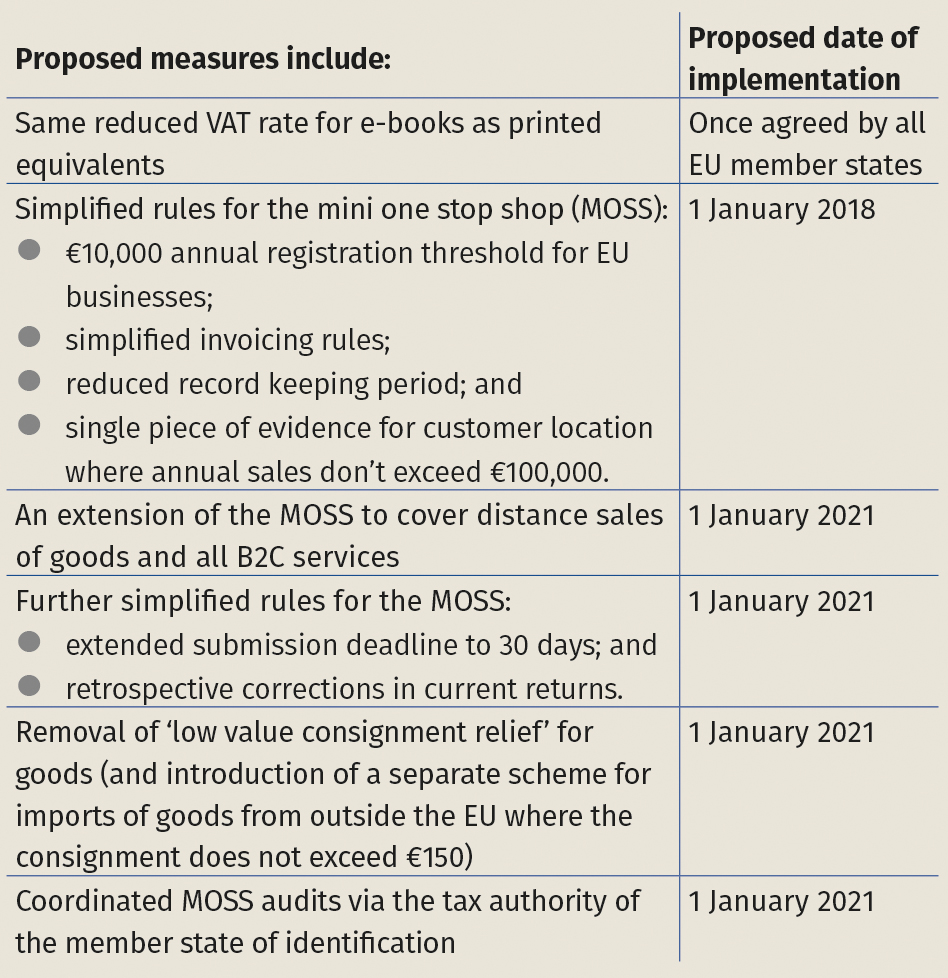Laura Gowland (KPMG) provides an overview of the changes to simplify and modernise the VAT rules on e-commerce.
In December 2016 the European Commission released its proposals for new measures to modernise B2C e-commerce as part of its digital single market strategy. The key aims of these proposals are to combat fraud and non-compliance and to make it easier for small businesses and start-ups to trade their goods and services online. The majority of the new VAT rules are expected to take effect as of 1 January 2018 and 1 January 2021.

The EC has outlined three main drivers for these proposals.
First many small businesses refuse to engage or claim they are unable to engage in cross-border e-commerce due to the complexity of...
If you or your firm subscribes to Taxjournal.com, please click the login box below:
If you do not subscribe but are a registered user, please enter your details in the following boxes:
Laura Gowland (KPMG) provides an overview of the changes to simplify and modernise the VAT rules on e-commerce.
In December 2016 the European Commission released its proposals for new measures to modernise B2C e-commerce as part of its digital single market strategy. The key aims of these proposals are to combat fraud and non-compliance and to make it easier for small businesses and start-ups to trade their goods and services online. The majority of the new VAT rules are expected to take effect as of 1 January 2018 and 1 January 2021.

The EC has outlined three main drivers for these proposals.
First many small businesses refuse to engage or claim they are unable to engage in cross-border e-commerce due to the complexity of...
If you or your firm subscribes to Taxjournal.com, please click the login box below:
If you do not subscribe but are a registered user, please enter your details in the following boxes:





